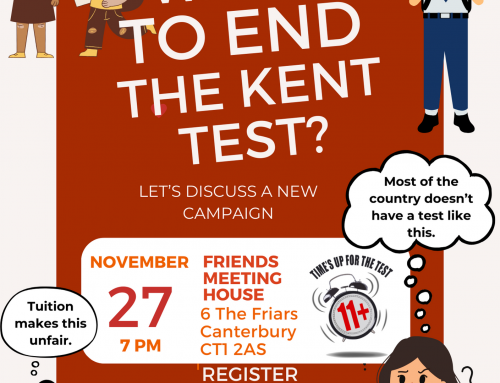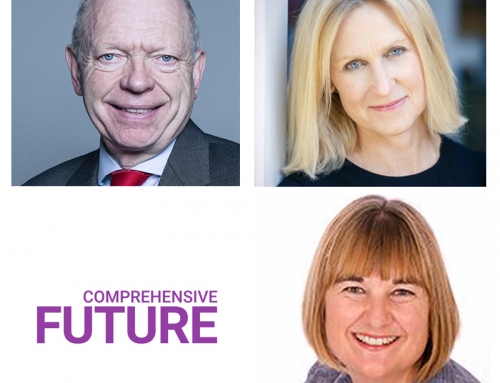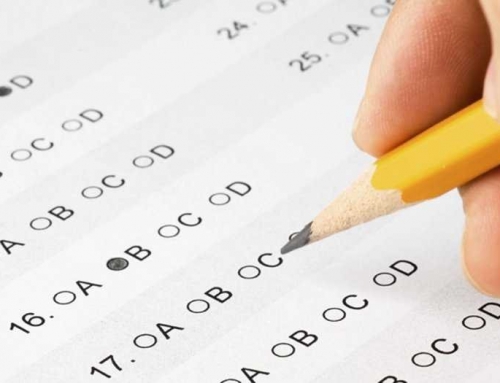A speech at the Comprehensive Future AGM at 19 November 2013 by
Richy Thompson Campaigns Officer (Faith Schools and Education), British Humanist Association
Recent news
Thanks for having me, I’m glad to be here and to personally be getting more involved in Comprehensive Future. This speech is particularly well timed as this is a very busy period in the media for fair admissions. Quite aside from the Sutton Trust report on grammar schools there has been a lot of action over the last week around faith-based admissions. To recap: on Thursday Justin Welby told a Times journalist that in Church schools, ‘There’s a steady move away from faith-based entry tests… It is not necessary to select to get a really good school. There are unbelievably brilliant schools that are entirely open to all applicants without selection criteria apart from residence, where you live, and which produce staggeringly good results. It’s a question of — and you can point to them all over the place — it’s a question of outstanding leadership.’ When the Church realised that this was being reported on the front page, they panicked and immediately issued another statement denying this was a change of policy.
Subsequently yesterday the General Synod debated Church schools and the Bishop of Oxford wrote an article for the Telegraph, also on the front page, claiming that their schools are as inclusive as other schools, because their intakes in terms of ethnicity and free school meal eligibility are in line with the national average. This, of course, is a flawed comparison and I’ll focus on that more in a minute.
On Friday the Catholic Bishops’ Conference issued a statement in which they declared their opposition to the establishment of any Catholic Free Schools because, they said, the fact that Free Schools can only religiously select 50% of pupils on the basis of faith means that the resulting schools cannot be ensured to have a distinctive Catholic ethos. They urged the Catholic Education Service to continue to campaign against this policy.
Mapping
And the final reason this is well timed is because very soon, we think next week, the Fair Admissions Campaign is going to publish an interactive map showing every state secondary school in England, showing how religiously selective their oversubscription criteria are, and how representative of their area they are in terms of English as an additional language and free school meal eligibility. Users will also be able to search and filter schools, look at profiles of individual schools, as well as looking at heatmaps of how different local authorities measure up on these three statistics. We hope it will prove a useful tool to those interested in admissions whether from a grammar or a faith-based perspective, as well as for journalists and most importantly of all, parents interested in what’s going on in their area.
Extreme examples:
One thing this has been hugely useful for is identifying the very worst offending schools. To give three examples:
1. The London Oratory School currently ranks sixth on our worst schools for Free School Meal eligibility. 7% of pupils are eligible, compared to 39% locally. And indeed let’s look at its admissions criteria: as well as requiring baptism within six months, regular Church attendance for years and attendance of a Catholic primary, the school has a criteria giving priority to parents who engage in Service in any Catholic Parish or in the wider Catholic Church’. This requires parents for at least three years to carry out activities including ‘Assisting in the Liturgy: for example by reading, singing in the choir or playing an instrument, altar serving, flower arranging.’
2. Twyford Church of England School in Ealing has 10% of its intake eligible for FSM and speaking EAL, compared to 28% locally being eligible for Free School Meals, and 60% not speaking English as a first language. It has an extremely long list of activities it expects both parents and children to partake in. Parents are expected to be involved in four ‘voluntary service’ activities from a list which includes ‘Assisting with collection/counting money’, ‘Tea & coffee Rota’, ‘Church cleaning’, ‘Church maintenance’, ‘Parish Magazine Editor’ and ‘Technical support.
3. Finally I would point to Yesodey Hatorah Secondary Senior Girls’ School in Hackney. 2% of local pupils are eligible for FSM compared to 30% locally. It requires that prioritises ‘Charedi Jewish girls who meet the Charedi criteria as prescribed by the rabbinate of the Union of Orthodox Hebrew Congregations.’ This has a long definition including ‘All members of this community lead an extremely modest way of life dictated by the highest moral and ethical values… Charedi homes do not have TV or other inappropriate media, and parents will ensure that their children will not have access to the Internet and any other media which do not meet the stringent moral criteria of the Charedi community. Families will also dress at all times in accordance with the strictest standards of Tznius (modesty)’. There are no objective measures such as regular worship attendance, which is likely to be a breach of the Admissions Code.
Religious selection overall
These are some extreme examples, but what do the overall figures tell us? First of all, on religious selection, in order to gauge this we literally had to go about and look at every single state religious secondary in England and Wales, one by one, in order to determine what its admissions policies allow. From this we have been able to calculate that 13% of secondary places were subject to oversubscription criteria that are religiously selective. And from this we can estimate that the number of primary places in the same camp is likely to be 17%. In total this translates to 1.2 million places. To put this into context, just 4-5% of the parent-age population attends Church each week. However, these numbers mask a great variety between different religious denominations. With the Church of England we found that a slight majority of secondary places are inclusive, although this masks a great diversity, and where inclusivity is found it is mainly in schools that have had some external restriction on how religiously selective they can be (e.g. Voluntary Controlled, Free Schools): focussing on just those schools which have had no such restrictions the figure is actually two-thirds. Schools generically listed as Christian only select 9% of pupils on the basis of faith; the Oasis chain of Academies, for example, don’t religiously select; apart from that the main reason is because these schools are typically grammar schools so are happily selecting on another basis instead. Conversely, other faiths are all much more selective. The most extreme example is Catholic schools, where all bar 5 of the 340 Catholic schools in England and Wales fully select, giving an overall figure of 99.67%.
FSM overall
Now of course not all these schools are fully oversubscribed, but it’s still clear this is having a big impact. One way we can see this is if we look at the evidence around free school meal eligibility. Just to clarify what we’re doing, here and on English as an additional language what we have done is compared every school to its local area to see how representative they are of their area on these two measures. Initially we defined local area as middle super output area, although for the map we will instead top this up a bit with other MSOAs in the same ward, first half of postcode and local authority – although this doesn’t make any big difference to the numbers.
But overall we see that while secondary schools with no religious character take 5% more pupils eligible for free school meals than would be expected for schools located in their areas, Church of England schools take 9% fewer; Catholic schools take 24% fewer; Jewish schools 70% fewer, and Muslim schools 31% fewer. But what is really interesting is that thanks to having worked out the admissions policies of all the secondary schools, we can look at the difference between Church of England schools whose admissions allow for 100% selection and those that don’t allow for any selection at all. Those that don’t allow for selection are typically just 4% less inclusive than would be expected, whereas those that allow for 100% selection are 19% less inclusive. This seems to show quite clearly the impact of such selection on a school’s intake.
Overall we see that 48 of the worst 100 secondary schools on our FSM measure are religiously selective, despite their making up 13% of all schools. This rises to 73 when we exclude grammars (which constitute 39 of the worst 100, despite having under 5% of schools). On EAL, 50 of our worst 100 are religiously selective (while 15 are grammars).
Wider evidence
There’s also a lot of wider supporting evidence that supports what I’ve set out. The literature repeatedly shows that religious schools that are their own admissions authorities are more likely to be socio-economically and ethnically selective, but Allen and West have found that richer Catholics and Anglicans are more likely to send their children to faith schools than poorer Catholics and Anglicans. Tearfund found in 2009 that the richer faithful are generally more religiously observant, with observance of course being standard admissions practice. Whereas Barnardo’s have found that immigrants are often unable to meet or deal with religious practice requirements.
Parent
But I just want to finish by quoting a parent who emailed us recently. She said ‘My son who is now 5 has missed out on a placement at all the schools in our catchment area. I am a single working mum and am struggling to cope getting him to a school miles away. It is effecting my job as we need to use public transport and three bus journeys to get him to school which means I am often late for work. The journey is repeated again in the evening when he is exhausted. He attends after school club at least 4 to 5 days a week and then to be put in a school so far from home is just too much to cope with at his age. Over the last year he has slipped further and further down the waiting list for other schools and I am now very desperate for help.’
Quite aside from any arguments I’ve set out about the effects of faith-based admissions, this seems to me to be an unfair situation and one that the Fair Admissions Campaign is hoping to do something about.




